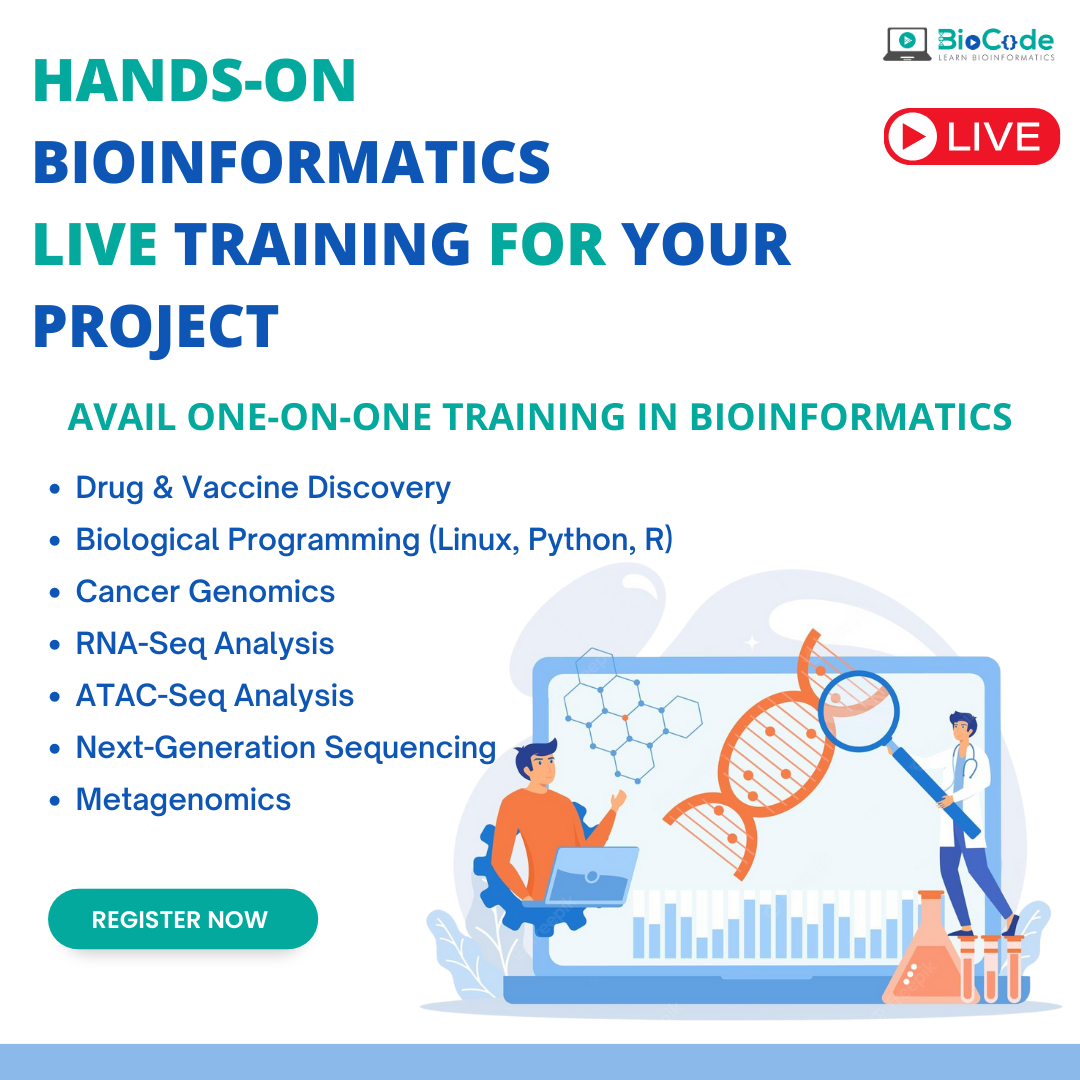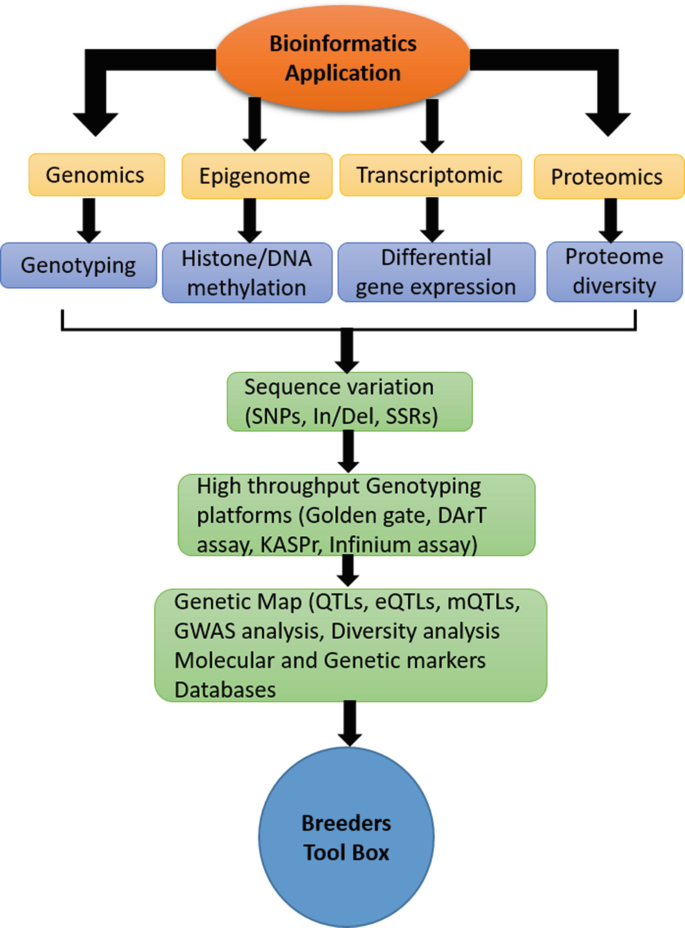Top Guidelines Of Bioinformatics Tutor
Top Guidelines Of Bioinformatics Tutor
Blog Article
The Ultimate Guide To Bioinformatics Tutor
Table of ContentsGetting The Bioinformatics Tutor To WorkBioinformatics Tutor Fundamentals ExplainedThe Only Guide for Bioinformatics TutorThe 6-Minute Rule for Bioinformatics TutorHow Bioinformatics Tutor can Save You Time, Stress, and Money.
Of the total participants entailed in the training, 80% were pupils from public college organizations, while the remaining 20% originated from personal establishments. To receive a certificate of involvement, students were called for to participate in a minimum of 90% of the overall training hours. As an outcome of this need, an excellent 95% of the individuals successfully obtained their certificates, having not only met the minimum participation criteria however also completed all designated tasks throughout the training.
During the height of the COVID-19 pandemic, particularly in between June and August 2020, the job team was charged with organizing specialized training in bioinformatics. This training was especially targeted at trainees from the study group Nucleus for Study in Applied Computing at the Federal College of Pará (UFRA) The adjustment to remote knowing systems due to the pandemic developed a chance to explore new teaching methodologies and digital devices that improved both reach and efficiency.
This training course was developed to supply an easily accessible yet thorough overview of Artificial Intelligence methods, particularly as used in bioinformatics (Bioinformatics Tutor). This digital layout enabled engagement from trainees throughout Brazil, many of whom might not have had the chance to participate in in-person sessions.
Some Ideas on Bioinformatics Tutor You Need To Know
A significant feature of this course was its emphasis on hands-on understanding. Around 50% of the complete training hours were dedicated to functional activities where pupils constructed intelligent designs and applications in a variety of scientific domain names, consisting of genes, molecular biology, and ecological data analysis. Commonly used frameworks and devices such as Spyder, Google Colab, Jupyter Notebooks, and Orange were integrated into the coursework. These platforms allowed students to engage in real-time information adjustment, design training, and formula trial and error.
Sixty of them were connected with numerous greater education and learning institutions in the state of Pará, while the continuing to be twenty came from organizations found in 5 various other Brazilian states. By presenting Artificial Intelligence in a pertinent and functional context, the initiative served to connect the void between theory and real-world application, supplying trainees with a solid structure for future study or work in the area.
The training campaign created component of a more comprehensive scholastic outreach initiative known as the Bioinformatics when driving task. This job has, over the find out years, introduced lots of trainees to the globe of bioinformatics and computational biology. The occasions held under this umbrella campaign have actually taken location throughout multiple regions and years, as summarized in Table 1 (List of occasions, locations, years, and total varieties of trainees and trainers)
Numerous of these teams, at first brought together by their participation in training occasions, have actually considering that gone on to produce independent clinical study site here in partnership with local academic establishments. The training not just cultivated scientific thinking within the context of bioinformatics but additionally stimulated collective connections that prolonged beyond the training environment.
The Basic Principles Of Bioinformatics Tutor
The project itself was conceived and organized by MB and RR, that looked after the preparation and implementation of each action. Lectures were provided by a multidisciplinary team including MB, FA, EF, KP, JS, DM, SN, LP, LG, IH, air conditioner, and rr. The same team, leaving out IH and RR, also served as tutors for the useful training components. Financing for the job was offered via the give 88887.200562/ 2018-00 from CAPES. The writers prolong their appreciation to every person who contributed to the understanding of this task, whether directly or indirectly, considering that its inception.
The Federal College of Pará's Office of Research (PROPESP/UFPA) additionally gave financial backing, particularly for the manufacturing of the last manuscript. The writers state no commercial or financial problems of passion that can have influenced the research. In addition, all interpretations and opinions revealed in this write-up are exclusively those of the writers and do not always mirror those of their particular institutions, the author, editors, her explanation or reviewers involved in the magazine procedure.

Indicators on Bioinformatics Tutor You Need To Know
From a pedagogical perspective, the mentor approach utilized in the training was deliberately interactive. Courses were performed in a manner that encouraged pupil participation and discussion, going beyond rote memorization to explore exactly how concepts are established, used in life, and examined in academic settings. The instructional viewpoint concentrated on nurturing both solid and battling trainees, supplying customized assistance, and building confidence with sustained mentorship and patience.

Each group, containing around 36 participants, was supported by three mentors-- a lot of whom were postdoctoral researchers with specialized know-how. These coaches not only assisted create the group projects yet additionally promoted their execution, making certain that each research study inquiry was both relevant and suitably challenging. The goal was to offer a naturally reasonable context that individuals could explore via flexible goals and accessibility to curated datasets.
For extra understandings right into the technique and end results of this project-based discovering technique, visitors are directed to S1 Text, that includes in-depth summaries of the instructional framework, examination approaches, and project styles utilized in the training sessions.
An Unbiased View of Bioinformatics Tutor
Of the total amount individuals entailed in the training, 80% were pupils from public higher education and learning institutions, while the remaining 20% came from private establishments. To qualify for a certificate of participation, trainees were required to go to at the very least 90% of the complete training hours. Especially, beyond the trainees who enrolled in the training sessions, seven skilled instructors got involved in delivering the training courses, while 3 committed study professors coordinated the overall training process. About 50% of the total training hours were devoted to useful tasks where trainees constructed intelligent designs and applications in an array of scientific domain names, including genes, molecular biology, and ecological data evaluation. The training not only fostered clinical reasoning within the context of bioinformatics but additionally sparked collective relationships that prolonged beyond the training atmosphere.
Report this page